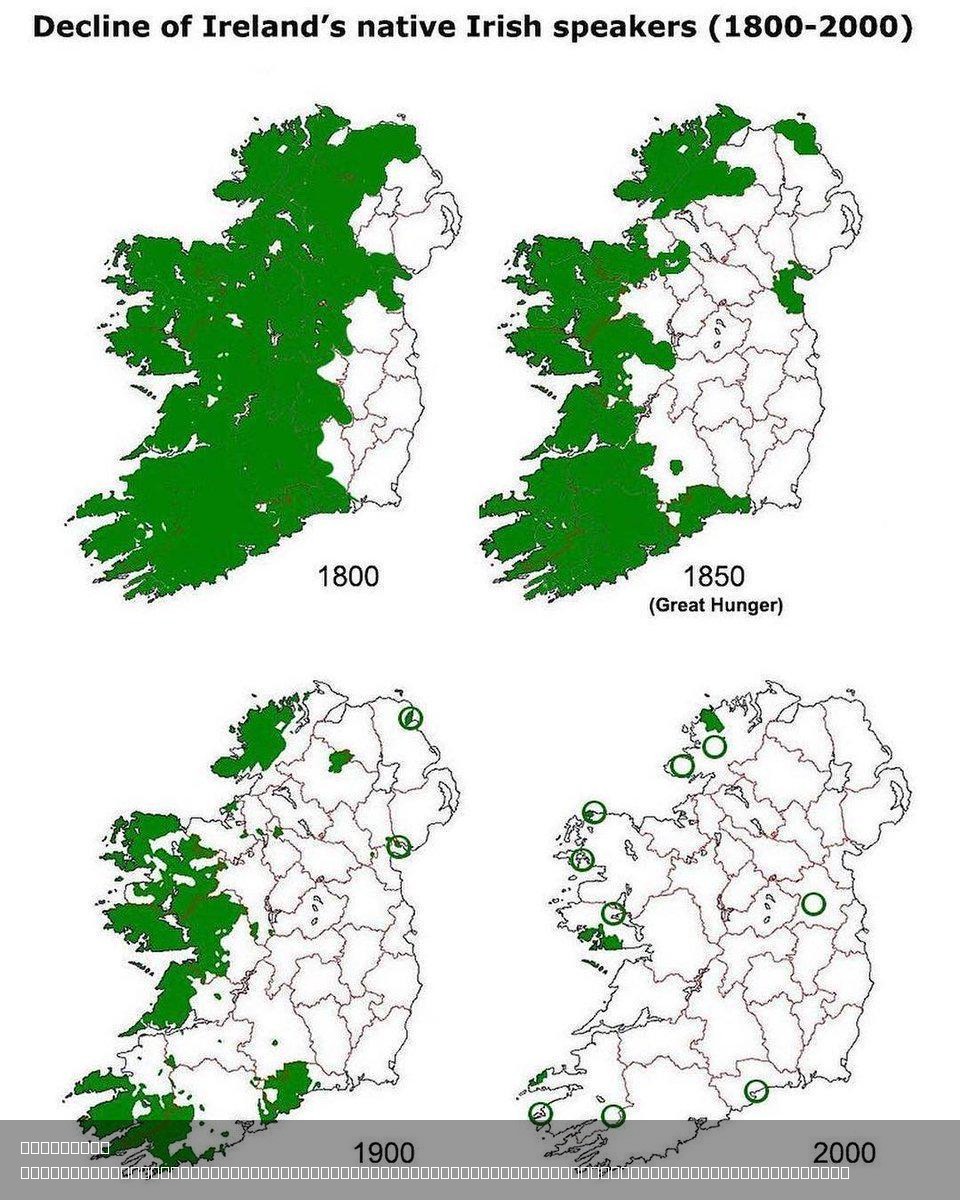Decline of Native Irish Speakers Map


Alex Cartwright
Senior Cartographer & GIS Specialist
Alex Cartwright is a renowned cartographer and geographic information systems specialist with over 15 years of experience in spatial analysis and data...
Geographic Analysis
What This Map Shows\nThis map visualizes the decline of native Irish speakers across Ireland, highlighting regions where the language has significantly diminished due to historical, political, and social factors. The impact of British colonial policies on Irish culture, especially the suppression of the Irish language and music, is poignantly illustrated through this visualization, allowing us to better understand the geographical distribution of this linguistic change.
Deep Dive into the Decline of Native Irish Speakers\nThe Irish language, known as Gaeilge, has a rich history that dates back to ancient times. It was once the dominant language in Ireland, spoken by the majority of its population. However, the British colonization of Ireland in the 17th and 18th centuries marked a significant turning point for the Irish language. The imposition of English as the primary language of administration, education, and public life led to a gradual decline in the use of Irish.
Interestingly, the British authorities implemented policies explicitly aimed at discouraging the use of the Irish language. For instance, the Penal Laws restricted the rights of Irish Catholics, who were the primary speakers of Irish, and promoted English as a means of control. This approach not only marginalized the Irish language but also the cultural practices associated with it, including traditional music and storytelling.
As a result, by the early 20th century, the number of native Irish speakers had drastically decreased, particularly in urban areas and regions where English was predominantly used. According to the 2016 Census, only about 10% of the population reported being able to speak Irish daily outside of the education system, a stark contrast to the vibrant Gaelic-speaking communities that once flourished throughout Ireland.
What's fascinating is that while some regions, particularly in the Gaeltacht areas (designated Irish-speaking regions), have managed to maintain a stronger connection to the language, others have seen a steep decline. For example, counties like Donegal, Galway, and Kerry still boast significant numbers of Irish speakers, but urban centers like Dublin and Belfast show markedly lower levels of native speakers.
Regional Analysis\nLooking at the map, we can see stark disparities in the preservation of the Irish language across different regions. The Gaeltacht areas, particularly in the west of Ireland, remain the last bastions of native Irish speakers. In these regions, community initiatives and government support aim to revitalize the language through education and cultural programs. For example, in County Galway, local organizations are working tirelessly to promote Irish language education in schools, which has shown promising results in keeping the language alive.
Conversely, in urban centers such as Dublin, the decline is more pronounced. Here, the language is often viewed as a subject to be learned rather than a living means of communication. The map illustrates this with a significant drop in the percentage of native speakers, reflecting the broader trend of language shift towards English. The younger generations, despite their education in the language, often find themselves using English in their daily lives due to social and economic factors.
Interestingly, areas with a stronger emphasis on cultural identity and heritage, such as parts of County Clare and West Cork, seem to have higher retention rates of Irish speakers. This suggests that cultural pride and community engagement play critical roles in language preservation. In contrast, regions that have historically been more influenced by English-speaking populations show a marked decrease in native speakers, as seen in parts of Northern Ireland.
Significance and Impact\nThe decline of native Irish speakers is not just a linguistic issue; it reflects broader socio-political dynamics that have shaped Ireland's history. The loss of a language carries with it the potential loss of cultural identity and heritage. Language is deeply intertwined with community, traditions, and ways of life. Therefore, the decline of Irish is a poignant reminder of the historical injustices faced by the Irish people and the ongoing struggle for cultural preservation.
The current trends indicate a slight resurgence of interest in the Irish language, particularly among younger generations who seek to reconnect with their heritage. Government policies promoting the use of Irish in schools and public life, along with grassroots movements advocating for its use, signal a potential shift towards revitalization. However, whether these efforts will be sufficient to counter the historical decline remains to be seen.
In conclusion, the map of the decline of native Irish speakers serves as a crucial tool for understanding the implications of colonialism on language and culture. It highlights the urgent need for continued efforts in language promotion and preservation as Ireland navigates the complexities of its cultural identity in the 21st century.
Visualization Details
- Published
- August 6, 2025
- Views
- 168
Comments
Loading comments...